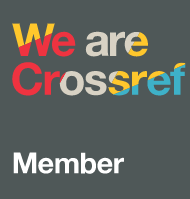- Focus and Scope
- Section Policies
- Open Access Policy
- Author Guidelines
- Copyright and Licensing
- Publication Ethic
- Author Fees
Focus and Scope
Jurnal SIMBIOSA mempublikasikan hasil penelitian yang belum pernah dipublikasikan. Fokus pada bidang keilmuan Biologi Sain dan Pendidikan Biologi, Ilmu Biologi Terapan, Ekologi Terapan khususnya Pengelolaan Sumberdaya Alam, Konservasi dan Biodiversiti.
Section Policies
Articles
Open Access Policy
This journal provides immediate open access to its content on the principle that making research freely available to the public supports a greater global exchange of knowledge.








